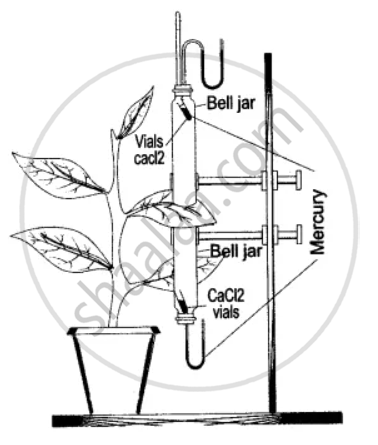Advertisements
Advertisements
Question
State the functions of guard cells.
Solution
Guard cells regulate the opening and closing of stomata thus, control gas exchange and transpiration.
APPEARS IN
RELATED QUESTIONS
Choose the correct answer:
Stomata open during day time because guard cells
Differentiate Between Cobalt chloride paper and Goat’s bladder.
The apparatus shown here is Girreau’s poto-meter designed to demonstrate unequal transpiration from the two surfaces of a dorsiventral leaf. Before keeping the leaf in between the cups, anhydrous calcium chloride (CaCl2) contained in two small vials were weighed and placed in both the cups. The ends of the cups were closed with corks through which two mercury manometers were connected. After a few hours, CaCl2 vials were taken out and weighed again.
(i) What is the purpose of keeping CaCl2 vials inside the cup?
(ii) After a few hours, the CaCl2 vials were taken out and weighed again. Will you expect any difference in weight? If so, give reasons.
(iii) What was the purpose of using a mano-meter?
(iv) What do you mean by transpiration?
Draw a labeled diagram of the stomatal apparatus and label the following in it: Stoma, Guard cells, Chloroplast, Epidermal cells, and Cell wall.
Name the following:
A plant having sunken stomata.
Mark the most appropriate answer in the following:
In the mechanism of opening and closing of stomata, the important factor is
Name the following:
The openings on the barks of trees through which transpiration occurs.
When guard cells are flaccid, the stoma must be ______.
Give a reason/suitable explanation.
More transpiration occurs from the under surface of a dicot leaf.
